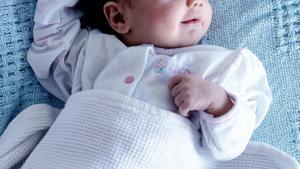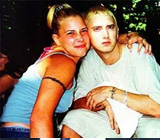

The study, published today in the journal Pediatrics, found that 14 popular infant noise machines produce sound levels exceeding 50 decibels – the upper limit for infants in hospital nurseries. Sound levels from three of the machines exceeded 85 decibels, which could lead to hearing loss, according to the study.
“Exposure to these devices may place infants at risk of developing noise-induced hearing loss or maldevelopment of the auditory system,” the study authors wrote.
Infant noise machines help babies sleep by masking other sounds. But the study authors stressed that parents should keep the machines at a low volume and as far from their babies’ ears as possible. Parents should also limit the duration of the noise, according to the study.
Noise machines aren't the only baby soother to come under scrutiny. Read on for the facts about other popular pacifiers.
Swaddling
Wrapping your baby up like a burrito can work wonders for sleep by keeping flailing arms tightly tucked. But some experts say full-body swaddling can cause hip problems.
“Modern swaddling calls for freedom of the legs and hips,” Dr. Richard Schwend, chair of the American Academy of Pediatrics’ Orthopedics Executive Committee, said on the AAP website. “If you can secure their arms, they have the benefits of swaddling without the risk to the hips.”
The blanket should also be loose enough that the baby doesn't have trouble breathing, but not so loose that it unravels, according to the AAP. Parents should be able to slide a hand in between the blanket and the baby’s chest.
Slings
Babies love to snuggle up to mom’s chest, and infant slings are a great way to snuggle on the go. But infant slings can pose a suffocation risk if used improperly.
“If the baby sling's fabric presses against a baby's nose and mouth, the baby might not be able to breathe,” Dr. Jay Hoecker of the Mayo Clinic said on the hospital’s website. “A baby sling can also keep a baby in a curled position — bending the chin to the chest. This position can restrict the baby's airways and limit the baby's oxygen supply.”
Parents should make sure their baby’s face is visible at all times when using a sling, Hoecker said.
Pacifiers
Popping a binky in baby’s mouth can work like a charm. But prolonged use of a pacifier can cause mouth and teeth problems, according to the American Dental Association.
“Sucking is one of an infant’s natural reflexes… It makes them feel secure and happy,” the ADA website reads, adding that prolonged sucking “may cause problems with the proper growth of the mouth and the alignment of teeth. It also can cause changes in the roof of the mouth.”
The ADA recommends weaning children off pacifiers and thumb-sucking by the age of 4. In the meantime, be sure to use a clean pacifier, and never dip it in sweeteners before giving it to an infant, according to the ADA.
To avoid choking and strangulation, the American Academy of Pediatrics recommends buying pacifiers made from one piece of plastic and never tying them around a child's neck or hand.



















